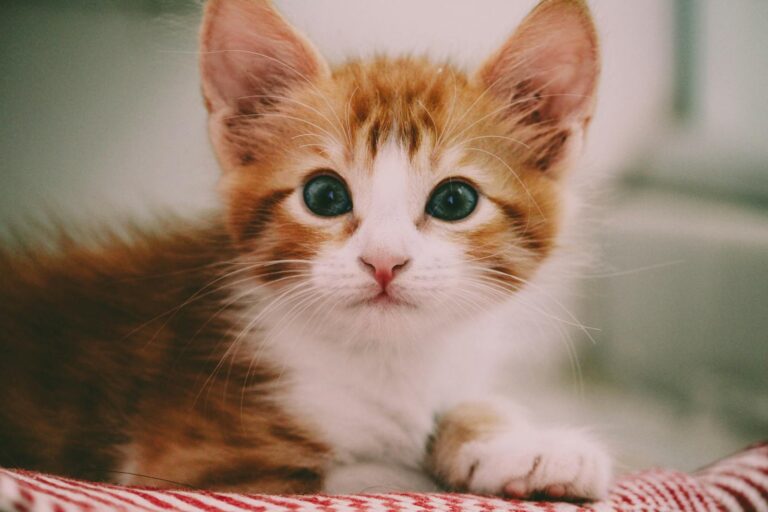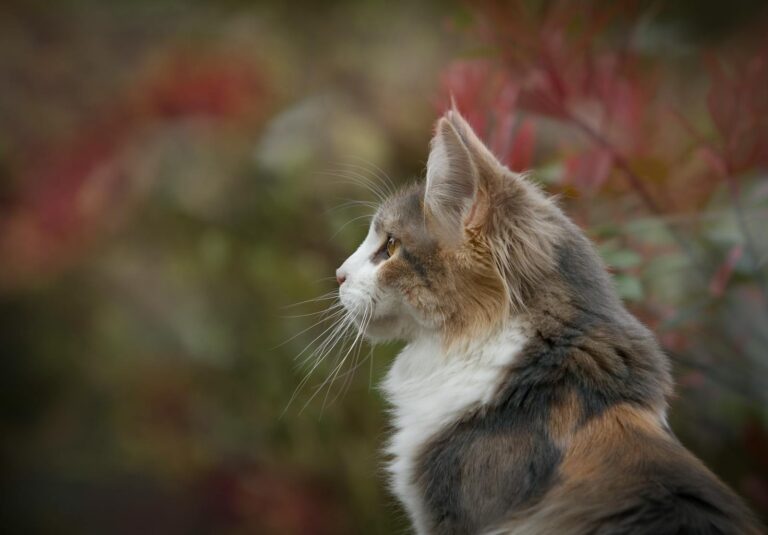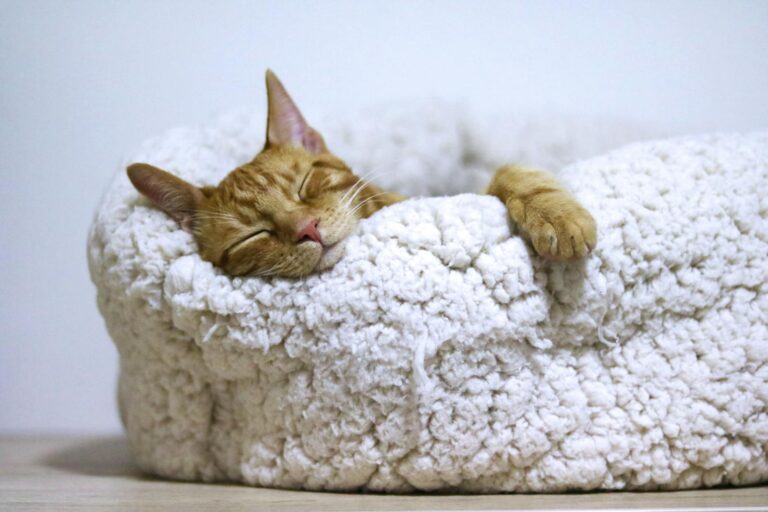Mastering the Art of Feline Enrichment – How to Train Your Cat to Use a Scratching Post
If you’re a cat owner, you may have experienced the frustration of your beloved feline scratching furniture, carpets, or other household items. Learning how to train your cat to use a scratching post can not only save your possessions but also provide your cat with a healthy outlet for their natural behaviors. This guide will explore effective methods to encourage your cat to embrace a scratching post, promoting both their well-being and your peace of mind.
Understanding Your Cat’s Scratching Instincts
Before diving into training techniques, it’s crucial to comprehend why cats scratch in the first place. Scratching is an instinctual behavior that serves multiple purposes for our furry companions. By understanding these instincts, we can better cater to their needs and facilitate a positive scratching experience.
The Purpose of Scratching
Scratching is not merely a destructive habit; it plays a vital role in a cat’s physical and mental health.
Scratching allows cats to shed old claw sheaths, maintaining their claws’ health and functionality. Additionally, this action stretches their muscles and provides them with a form of exercise, which is essential for indoor cats that may not have as much opportunity to roam and explore.
Another key aspect of scratching is its importance in marking territory. Cats have scent glands in their paws, and when they scratch, they leave behind both visual marks and pheromones that communicate to other animals that this space belongs to them.
Emotional Release through Scratching
For many cats, scratching can be a means of emotional expression. It helps reduce stress and anxiety, providing an outlet for pent-up energy or frustration.
Understanding this can help owners see scratching not just as a nuisance but rather as a necessary activity for their cat’s mental well-being. When a cat scratches, it engages in a behavior that feels good and satisfying, serving as a natural release mechanism.
Different Types of Scratching
Not all scratching is created equal. Cats often prefer different textures and surfaces for scratching, and knowing this can aid in selecting the right post for your cat.
Some cats enjoy vertical surfaces, while others may prefer horizontal ones. Materials such as sisal, cardboard, and carpet offer unique sensory experiences for cats, so understanding your cat’s preferences can make a significant difference in how they interact with their scratching post.
Choosing the Right Scratching Post for Your Cat
Selecting the ideal scratching post is essential for successful training. The right post not only caters to your cat’s preferences but also enhances their overall satisfaction and encourages regular use.
Material Matters
Different materials serve various purposes in scratching posts, and recognizing what your cat enjoys will help in making the right choice.
Sisal rope is highly favored among many cats due to its durability and texture. It provides the necessary resistance that many felines seek when scratching.
Cardboard scratching pads can also be enticing, as they replicate the texture of tree bark, allowing cats to indulge in their instinctive behavior.
Wooden posts might appeal to some cats, offering sturdiness and an organic feel.
When choosing a material, consider your cat’s habits and preferences to create a satisfying scratching experience.
Size and Stability
The size of the scratching post matters just as much as the material. A tall post may entice a cat that enjoys stretching upward, while a lower one may suit a more laid-back feline.
Stability is another critical factor. A wobbly post can discourage scratching altogether. Ensure the post has a solid base to withstand vigorous scratching without tipping over. This stability will allow your cat to feel secure while indulging in their instincts.
Design Variety
The design of the scratching post should align with your cat’s personal style and play preferences.
There are various designs available, including vertical posts, angled boards, multi-level trees, and even furniture-integrated options. Offering variety can keep your cat engaged and prevent boredom.
Consider observing your cat’s current scratching habits—do they scratch vertically or horizontally? Tailoring the design of the scratching post to fit their preferences can significantly increase its usage.
Placement is Key: Optimizing Scratching Post Location
Even the best scratching post won’t be effective if it’s not placed in the right location. Understanding where to position the scratching post can make all the difference in encouraging your cat to use it consistently.
High-Traffic Areas
Cats are social creatures and often prefer areas where they can observe their surroundings. Placing the scratching post in high-traffic areas of your home can draw your cat’s attention and encourage regular use.
Consider areas near furniture that your cat currently scratches. Positioning the scratching post nearby can serve as a tempting alternative, redirecting their scratching behavior to a more appropriate surface.
Near Sleeping Areas
Cats love to stretch and scratch upon waking up. Placing the scratching post near their sleeping area can make it a convenient option for them to engage in scratching after a nap.
Offering easy access to a scratching post can effectively promote its use, while also fulfilling your cat’s instincts immediately after they wake up.
Experimenting with Locations
Don’t hesitate to experiment with different locations around your home. Cats can be finicky, and sometimes it takes a little trial and error to find the perfect spot.
Observe your cat’s behavior to see where they spend most of their time and adjust accordingly. If they’re drawn to certain areas, try placing the scratching post there to see if it catches their interest.
Making the Scratching Post Appealing: Luring Techniques
After selecting and positioning the scratching post, the next step is to make it irresistible to your cat. Various luring techniques can enhance the attractiveness of the post, leading to successful training.
Using Catnip and Treats
Catnip is a powerful motivator for many cats. Sprinkling fresh catnip on the scratching post can instantly pique their interest and encourage exploration.
You can also reward your cat with treats every time they use the scratching post. This positive reinforcement creates a direct association between the scratching post and good things, motivating your cat to engage with it more frequently.
Incorporating Toys
Adding toys to the scratching post can make it far more engaging for your cat. Consider dangling toys from the top or attaching interactive features that encourage pawing and playing.
By incorporating toys, the scratching post becomes a multi-functional item, enhancing your cat’s playtime while also serving its primary purpose.
Creating a Routine
Establishing a routine can significantly influence your cat’s behavior towards the scratching post. Spend time with your cat near the post, gently guiding them to use it during playtime.
Consistency builds familiarity, and as your cat begins to associate the post with positive experiences, they’re more likely to use it naturally.
Positive Reinforcement: Rewarding Scratching Post Use
Positive reinforcement is a powerful tool in training your cat to use the scratching post. Rewarding desired behaviors can greatly influence your cat’s actions and reinforce new habits.
Timing is Essential
When using positive reinforcement, timing is crucial. Offer praises or treats immediately after your cat uses the scratching post. This instant feedback helps your cat understand that their behavior is desirable.
Be mindful of your tone and enthusiasm when rewarding your cat. They’ll respond better to genuine excitement, creating a positive association with the act of scratching the post.
Establishing a Reward System
Creating a structured reward system can help reinforce consistent behavior. You might decide to offer a treat after five successful scratches or give extra playtime when they use the post multiple times throughout the day.
Keeping track of your cat’s scratching habits can help you adjust rewards accordingly, ensuring they stay motivated and engaged.
Celebrating Progress
Celebrate your cat’s progress in using the scratching post. Whether it’s a small milestone or a significant achievement, acknowledging their efforts can strengthen their desire to continue using the post.
Incorporate extra playtime or special treats as a way of celebrating, reinforcing that using the scratching post is a commendable behavior.
Discouraging Inappropriate Scratching: Redirecting Behavior
While training your cat to use a scratching post, it’s essential to address any inappropriate scratching behavior. Redirecting your cat’s focus away from furniture or other surfaces can prevent damage and foster a harmonious environment.
Identifying Triggers
Take note of when and where your cat tends to scratch inappropriately. Understanding the triggers can inform your approach to discouragement.
Whether it’s a specific piece of furniture or a particular time of day, identifying these patterns can lead to more effective redirection techniques.
Providing Alternatives
If your cat is scratching furniture, ensure they have plenty of alternatives available. Place scratching posts and pads around the house, especially near areas they typically target.
Offering a variety of surfaces can encourage them to choose the designated scratching areas over your belongings.
Using Deterrents
Sometimes, using deterrents can be an effective strategy. Applying double-sided tape to furniture or utilizing commercial sprays designed to deter scratching can dissuade your cat from targeting those surfaces.
While these methods can be useful, remember that patience and consistency are paramount. Focus on redirecting to positive behavior instead of solely attempting to eliminate undesirable actions.
| Scratching Post Features | Benefits | Ideal For |
|---|---|---|
| Sisal Rope | Durable and satisfying | Active scratchers |
| Cardboard | Texture similar to bark | Cats who enjoy tearing |
| Wooden | Sturdy and natural feel | Cats who prefer tough surfaces |
| Multi-Level Trees | Engaging play and climb | Energetic cats |
Conclusion
Training your cat to use a scratching post is a journey that combines understanding their natural instincts with strategic placement, appealing techniques, and positive reinforcement. By selecting the right post, positioning it thoughtfully, and employing engaging methods, you can create an environment where your cat thrives. With patience and dedication, you’ll not only protect your furniture but also enrich your cat’s life with healthy outlets for their instinctual behavior.







